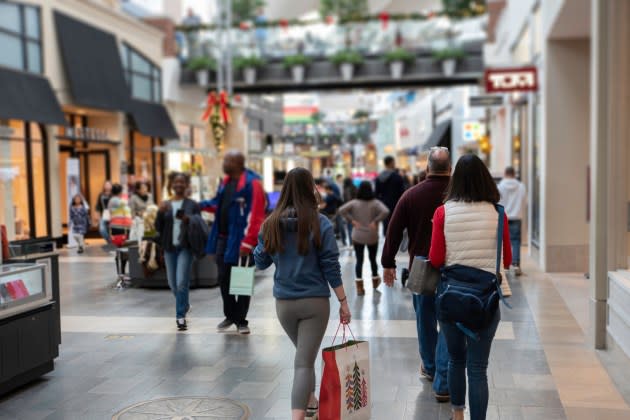Resilience at Retail, Q1 Mall Traffic Holds Up

Malls are seeing traffic gains this year, at least those buttressed by financially sound owners/operators and with evolved tenant mixes.
That’s the message coming from Placer.ai, the location analytics firm that mines and “de-identifies” data from tens of millions of mobile devices and uses AI and machine-learning to estimate traffic at malls, stores and other destinations. The data comes from 100 top-tier indoors malls, 100 open-air shopping centers and 100 outlet centers across the country, in both urban and suburban areas.
More from WWD
“There’s been strength almost across the board in terms of year-over-year growth. We are talking about top-tier malls here, defined as having a major owner with significant national tenants,” Ethan Chernofsky, senior vice president of marketing, Placer.ai, told WWD.

Placer.ai data for the first quarter of this year indicates that shopper traffic in February, at indoor malls, open-air shopping centers and outlet centers, rose 6 percent, 6.9 percent and 3.4 percent, respectively.
March was better, with traffic up 9.2 percent, 10.1 percent and 11.1 percent, at indoor malls, open-air shopping centers and outlet centers, respectively.
The scenario in April, however, was different with indoor malls down 0.6 percent, open-air centers about flat, and outlet centers down 6.5 percent. The change in the trend was largely due to a calendar shift where Easter fell on March 31 this year versus April 9 in 2023, resulting in some business and traffic was pulled out of April this year and into March.
Still, most of April was good, with indoor malls and open-air shopping centers seeing “robust” year-over-year visit increases every week and into May, with the exception of the week of April 8, pulling the month down overall, according to Placer.ai.
“This isolated drop appears to be due to a calendar discrepancy: In 2023, Easter fell on April 9, while in 2024, the holiday fell on March 31. So the week of April 8, 2024, is being compared to the week immediately after the holiday (including Easter Monday) when malls likely experienced heightened activity due to gift returns and pent-up demand following holiday store closures,” Placer.ai said.
For the first part of the year overall, “The strength we are seeing here is significant,” Chernofsky said. “In a period where there is ongoing economic uncertainty, we still see consistent success from malls. Pre-COVID[-19], people were predicting a retail apocalypse. But clearly that’s not the case.”
Asked what’s driving traffic at the better malls, Chernofsky said, “There’s been some really strong strategic decision-making by a lot of top-tier mall owners to diversify the retail footprint, focus less on apparel and beauty, and upgrade the dining.”
They’re diversifying with fitness centers, restaurants and experiences that create more excitement, Chernofsky said.
Especially at top-tier malls, there is more demand for the space than what’s readily available, giving mall operators and owners increased leverage over retail tenants, Chernofsky said. “You have a wider pool to pick from in terms of tenants,” putting more power into the hands of the landlords, he added. “It’s not just about shopping anymore. It’s about interesting higher-end dining and other experiences.”
Summing up how traffic has been thus far this year, Chernofsky said: “From a broad view, retail stumbled out of the gates, largely because of inclement weather. January was down 1 percent, but in mid- to late January, traffic starts to shift and continues through March with strong visit momentum to physical retail overall.”
Inflation, politics, interest rates, immigration and warfare in the Middle East and Ukraine are all dragging down consumer confidence, yet amid it all, U.S. shopping centers are holding up. But many consumers are trading down for their necessities. Superstores including Target, Walmart and Costco, off-pricers like T.J. Maxx and grocery stores are seeing traffic trends surpassing pre-pandemic levels, Chernofsky said.
Apart from the home improvement sector, with many people “spring cleaning,” April is “not a make or break” period for retailers, Chernofsky said. “It’s an average month,” in terms of retail sales through the year, he said.
Best of WWD

 Yahoo Finance
Yahoo Finance 